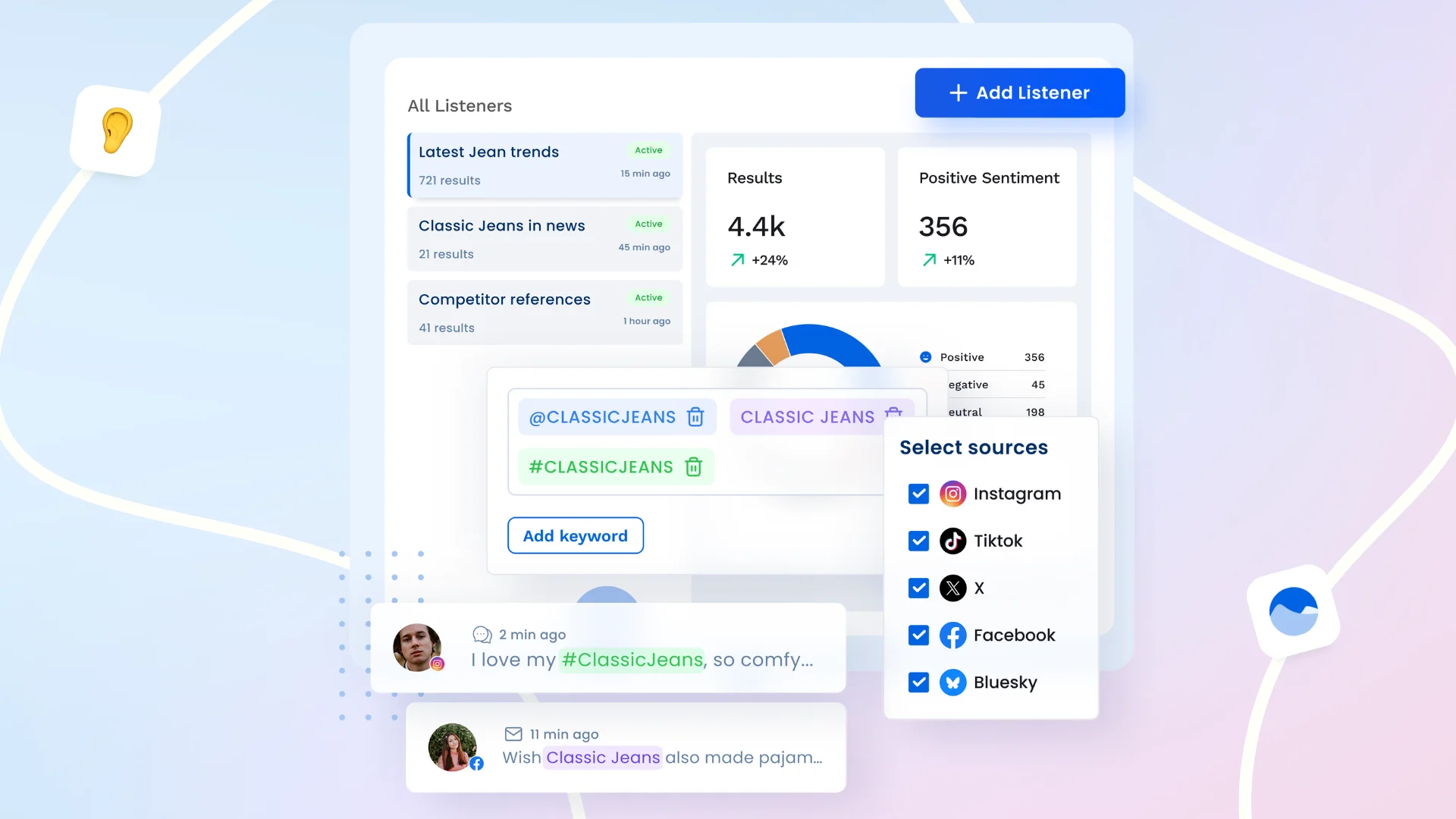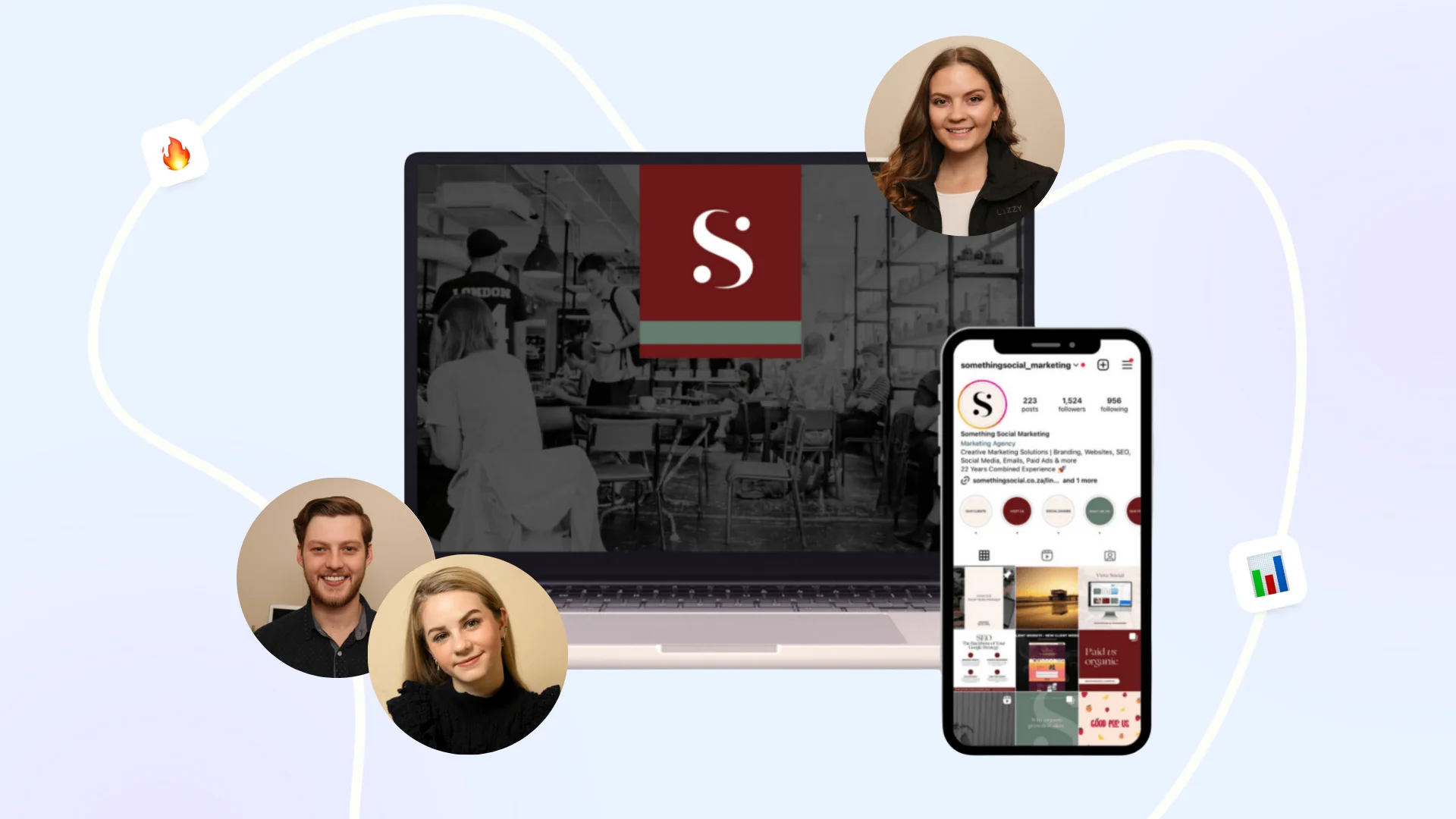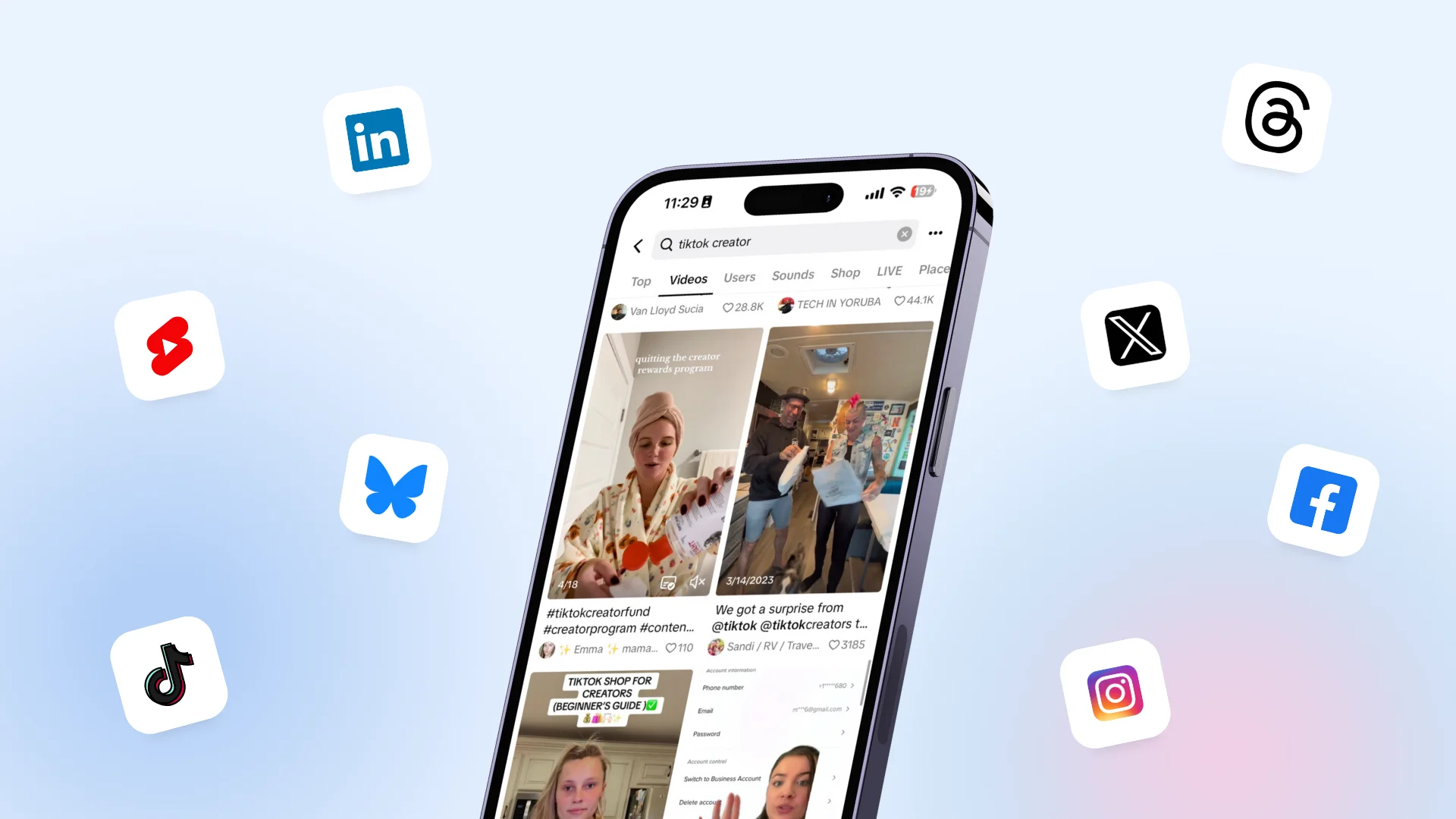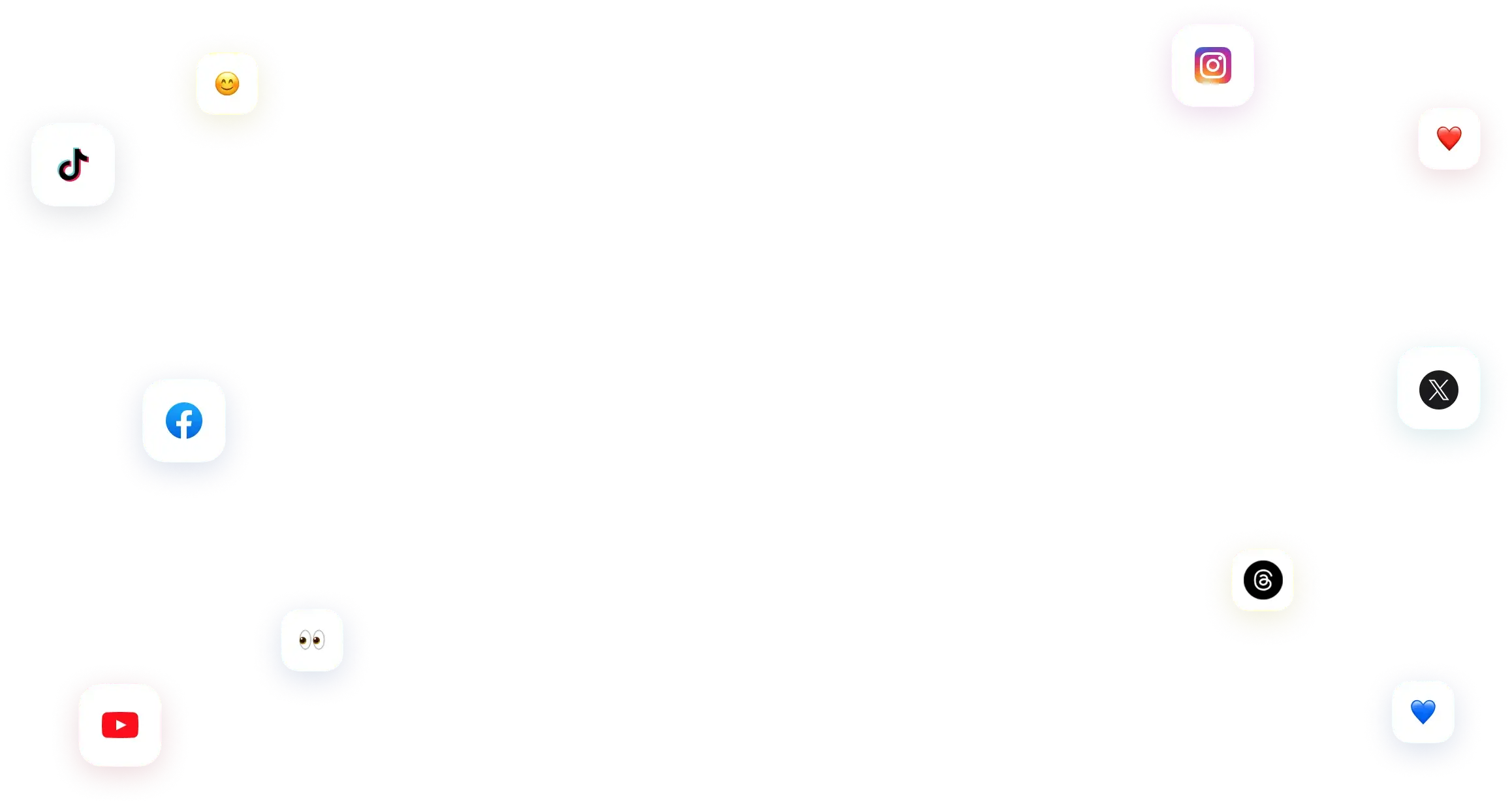New

Social Listening Made Simple: How to Use It for Brand Growth
Learn why social listening is no longer just for big brands and how Vista Social makes it affordable for creators, agencies, and small businesses.

How Something Social Saved 75% of Their Time and Increased Revenue by 15%
See how a fast-growing agency improved operations, cut down hours of manual work, and unlocked new revenue opportunities with Vista Social.
New

50 Unique Social Media Ideas for Consistent Content Creation
Discover 50 unique social media post ideas to engage your audience, grow your brand, and maintain a consistent content strategy with ease!
8 Strategies to Get Social with Your PR
Updated on January 11, 2022
6 min to read
Content Writer
Published January 11, 2022


Content
Share

Not long ago, it was almost impossible to achieve successful business promotion on the web without a website. Today the official company page or the page advertising a new product is no longer necessary. Instead, social networks with no less efficiency now perform all the functions.
As adults of all ages spend more and more time on social media, news consumption via this channel will increase. Who would have guessed that PR and social media will go hand in hand and we will use social media for PR? Social networks are an exceptionally convenient tool for solving PR tasks. Here you can run PR campaigns of any scale to create a positive impression about a brand or person, keep in touch with your target audience, and attract new customers.
The audience of social networks is always more active and perceives information less critically than in other sources. Groups and communities in social networks have long ceased to be exclusively an arena for user communication. For many companies, they become a personal PR manager and sales offices. Social networks can genuinely expand the possibilities of both B2C and B2B PR strategies. Let’s see how to combine these two areas to boost your brand.
Table of contents
8 Strategies to Combine Social Media and PR
PR is a large complex of works that affects your brand recognition, your image in the consumer’s mind, and the audience’s loyalty. And now, when social networks are most active and continue to gain momentum, it is a must to combine blogging, content marketing, and social media for PR.
1. Guest blogging.
Guest blogging is a modern PR nowadays. It is a powerful and budget channel for lead generation, increasing brand awareness. These are articles with unobtrusive and helpful advertising of a product/service, posted not in the company’s corporate blog but on the partners/opinion leaders/publications/thematic blogs. Done right, they reveal the guest writer and their business to a broader audience.
The main advantages of placing your content on third-party resources are the following:
- To get backlinks. High-quality backlinks help increase the site’s link mass and increase its position in the search results.
- To increase authority on the web. The more often people find your company in the web search and get acquainted with its products, recommendations, or life hacks, the higher the level of trust.
- To boost brand awareness. Guest blogging helps to stay in sight of the target audience and increases the memorability of brand attributes and the company.
- To increase traffic. Through backlinks on other resources, you can increase the traffic to your site and convert visitors into buyers.
- Increasing the target audience. Using guest blogging helps to attract new potential customers.
- To attract new partners. Posting content on third-party resources involves expanding contacts and developing new partnerships.
- To increase the customer base. With the help of guest blogging, you can increase the number of subscribers by email, in a chatbot, and on social networks.
For instance, we can see a guest post on the FastCompany blog below.
The author shares the content on Twitter once the content is published to get social media and PR in action.
2. Boosting a press release strategy through social media.
In terms of press releases, we can observe a considerable potential of social media as a medium for competent, effective PR.
A press release created for success in social media should not only announce the launch of any new services or the achievement of results. It should contain (most importantly) information about which technologies were (or will be) successful, why these technologies worked, and how the results can be helpful for the audience. Note that the audience of social networks has a highly negative attitude to attempts to sell something explicitly and direct marketing texts.
A press release that focuses not on the company’s advertising but the reader’s interests will give a much greater response in social media.
3. Posting on LinkedIn.
When it comes to new products and services, you can rely on LinkedIn to spread the word about the brand. However, it is not enough to talk about your product or business or do it without an objective reason. You always need context to introduce your offer to the audience.
Moreover, when senior employees publish a post from their accounts, this will help get more reach and recognition.
LinkedIn offers ample opportunities to establish new business connections, position yourself as an expert, and increase the company’s popularity. Use its advantages to achieve your goals.
4. Influencer marketing.
If you are looking for more engagement and buzz, you should consider influencer marketing to boost your social media PR efforts. An “influencer” can be not only a person but also any group, brand, company, or even a place that people trust.
The secret of influencer marketing is that it does not look like a direct advertisement. Instead, famous bloggers usually systematically embed a story about the advertised product/service in their content, and people tend to believe their loved ones.
Try Vista Social for Free
A social media management platform that actually helps you grow with easy-to-use content planning, scheduling, engagement and analytics tools.
Get Started NowWhen choosing influencers for cooperation, you should primarily focus on the niche. The influencer’s profile must correspond to the brand’s orientation and values to attract the right audience.
5. Preparing a social media crisis plan.
Reputation management is a set of methods and approaches to create, maintain, and control the company’s image. This is a long process, the primary purpose of which is not to allow reputation to be formed spontaneously. Therefore, the emphasis is on the correct positioning of the organization and the elimination of threats.
Companies often think about an anti-crisis plan during a wave of negativity or after the crisis. However, if you are prepared for it in advance, you can gain time and minimize losses in the long run.
Remember to always respond to the negative wave and show that you care. Customers will appreciate your concern, your attitude to the quality of the product, your desire to solve the problem.
6. Increasing your brand fans base with an ambassador program.
If you regularly see the same product in the blogger’s photos, but there is no direct advertising, perhaps the blogger is a brand ambassador. This is a new format through which companies form loyalty to their products and increase sales. Often famous personalities become ambassadors, and it is an excellent solution to social media PR.
The primary duty of ambassadors is to use the brand’s products and spread positive word of mouth. They should also talk about the values and mission of the company itself if there are any.
7. Launching a hashtag campaign.
A hashtag strategy must show relation to a topic, the company’s participation in a trend, or make posts more noticeable to the audience. It helps monitor conversations related to your business’ PR efforts and strengthen your brand identity.
Use a hashtag campaign to:
- To boost engagement with your audience;
- Show support for social issues;
- Focus on your brand achievements.
Below we can see how Nike has voiced its support of the Black Lives Matter movement with the #UntilWeAllWin hashtag.
8. Creating positive conversations around your brand.
Social media presence and positive interactions with followers create a pleasant buzz around your brand. Here are a few rules of productive communication with the target audience:
- Answer questions, mentions, and messages. Users often try to attract attention: they leave reviews, publicly criticize and praise, ask questions, and turn to brand representatives with suggestions. Show your audience that you do care. Be open and friendly.
- Use UGC content — make subscribers a part of your brand. It is ideal for showing attention to the audience and diversifying content.
- Encourage more engagement. There are many tools to help: interactivity, information guides, thanks, and especially questions at the end of posts.
Conclusion
Doing PR only or social media is no longer a question. Combining PR’ and social media’s strengths, your business can generate more robust results and build the more positive press.

Stay on top of your social media marketing tasks with the Vista Social social media management tool available to help. From engagement and publishing to powerful listening tools and analytics, Vista Social will help serve your customers better and build stronger relationships with them.
About the Author
Content Writer
Never Miss a Trend
Our newsletter is packed with the hottest posts and latest news in social media.

You have many things to do.
Let us help you with social media.
Use our free plan to build momentum for your social media presence.
Or skip ahead and try our paid plan to scale your social media efforts.
P.S. It will be a piece of cake 🍰 with Vista Social
Subscribe to our Newsletter!
to stay updated on the latest and greatest Social Media news
We promise not to spam you!







